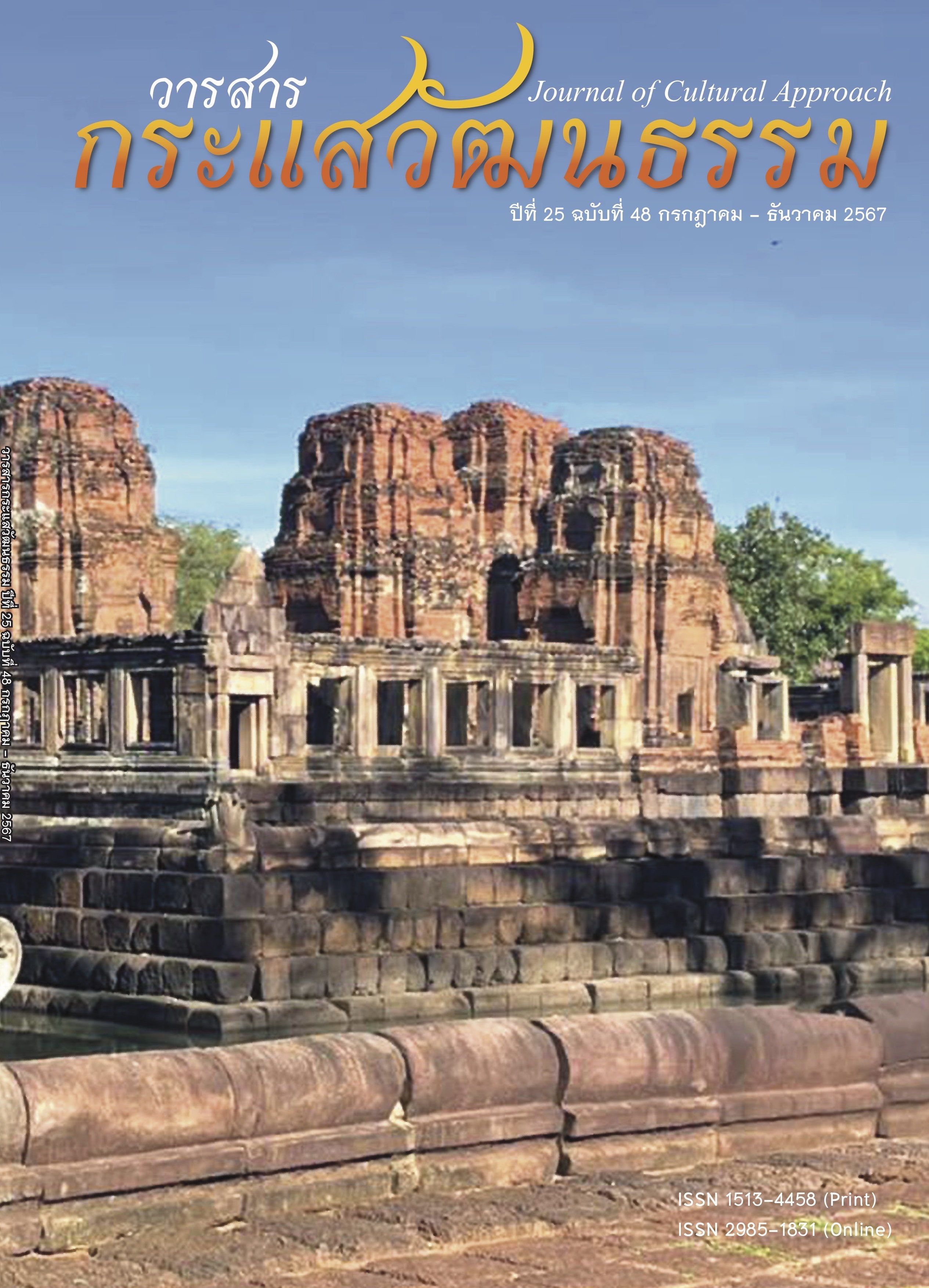The Motivation from the Identity of Songkhla Old Town’s Way of Life towards Pattern Design
Main Article Content
Abstract
The objectives of this study were 1) to study the identity of Songkhla Old Town for pattern design; 2) to present the traditional way of life in Songkhla Old Town through the concept of pattern structure design inspired by the identity of Songkhla Old Town; and 3) to evaluate the perceived identity of the pattern design. A set of questionnaires and an interview were used to collect the data. The pattern that passed the design experts’ evaluation criteria was Pattern 1. Overall, the identity of Songkhla Old Town in the design was rated at a high level with an average of 4.28. When considering each aspect, the pattern met the design concept framework at an average of 4.16. The pattern was unique at an average of 4.28. The pattern composition was attractive at an average of 4.34, and the pattern was suitable for the creation of fashion products at an average of 4.35. The study highlighted that the design obtained in this study is a combination of beauty and the story of the identity of Songkhla Old Town and is suitable for future development as a creative product. It can also be considered a part of cultivating awareness of the cultural appreciation and sustainability of Thai culture.
Article Details

This work is licensed under a Creative Commons Attribution-NonCommercial-NoDerivatives 4.0 International License.
Proposed Creative Commons Copyright Notices
1. Proposed Policy for Journals That Offer Open Access
Authors who publish with this journal agree to the following terms:
- Authors retain copyright and grant the journal right of first publication with the work simultaneously licensed under a Creative Commons Attribution License that allows others to share the work with an acknowledgement of the work's authorship and initial publication in this journal.
- Authors are able to enter into separate, additional contractual arrangements for the non-exclusive distribution of the journal's published version of the work (e.g., post it to an institutional repository or publish it in a book), with an acknowledgement of its initial publication in this journal.
- Authors are permitted and encouraged to post their work online (e.g., in institutional repositories or on their website) prior to and during the submission process, as it can lead to productive exchanges, as well as earlier and greater citation of published work (See The Effect of Open Access).
Proposed Policy for Journals That Offer Delayed Open Access
Authors who publish with this journal agree to the following terms:
- Authors retain copyright and grant the journal right of first publication, with the work [SPECIFY PERIOD OF TIME] after publication simultaneously licensed under a Creative Commons Attribution License that allows others to share the work with an acknowledgement of the work's authorship and initial publication in this journal.
- Authors are able to enter into separate, additional contractual arrangements for the non-exclusive distribution of the journal's published version of the work (e.g., post it to an institutional repository or publish it in a book), with an acknowledgement of its initial publication in this journal.
- Authors are permitted and encouraged to post their work online (e.g., in institutional repositories or on their website) prior to and during the submission process, as it can lead to productive exchanges, as well as earlier and greater citation of published work (See The Effect of Open Access).
References
Kamphrida, S. (2017). Nature Transformed into Dharma. Silpakorn University.
Keawpan, T., Itsaranuwat, S. & Plangnok, J. (2020). Principles and Concepts in Product Design. Journal of Humanities and Social Sciences Surindra Rajabhat University, 22(2), 161–182.
Laykhaphun, T. (2023). Interview – Phuket Old Town Design. Faculty of Architecture, Rajamangala University of Technology Srivijaya.
Lertcharnrit, T. (2011). The Creative Cultural Resource Management. Princess Maha Chakri Sirindhorn Anthropology Centre (Public Organisation)
Nanthawong, D. (2020). Concept and Management Pattern of Social Enterprise in Songkhla Old Town. Sarasatr, 3(1), 1–13.
National Housing Authority (NHA). (2009). Residential Development Plan and Community Overcrowding Prevention/Remediation Plan, Songkhla Province, Bangkok. NHA.
Pichayasoonthorn, P. (2013). Foundation of Design. Chulalongkorn University Press.
Pinalin, S. (2006). Pattern Design. O.S. Printing House.
Songkhla Development & Conservation Committee. (2011). Document for Soliciting Feedback to Develop a Conservation and Development Plan for the Old Town Area. Songkhla.
Suwannachart, J. (2023). Interview – Phuket Old Town Design. Faculty of Architecture, Rajamangala University of Technology Srivijaya.
Tawan, T. et al. (2019). Creating Natural Dyes and Fabric Patterns to Develop Community Batik. Presented at the 12th National Academic Conference on Architecture, Fine Arts and Creative Works, Research and Development Institute, Rajamangala University of Technology Thanyaburi.
Waedolorh, R. (2023). Interview – Phuket Old Town Design. Faculty of Architecture, Rajamangala University of Technology Srivijaya.


